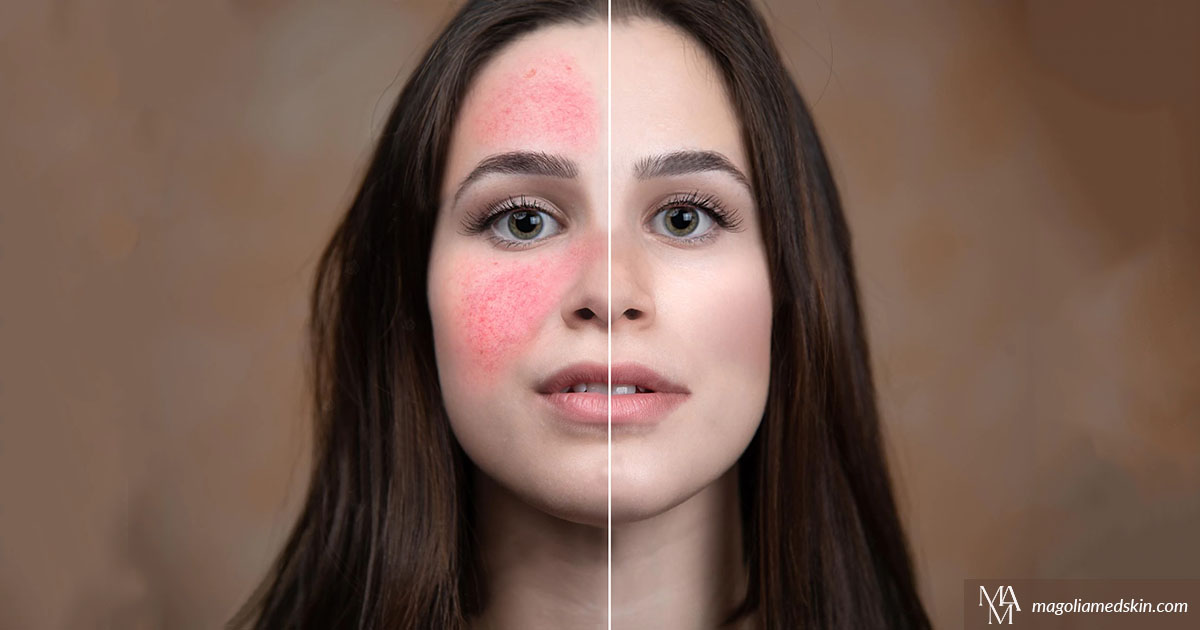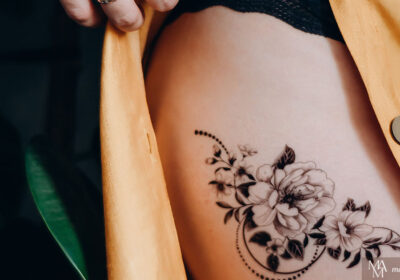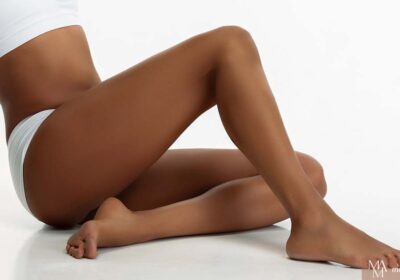What Is The Best Treatment For Rosacea?

If you’re trying to tame your rosacea symptoms, you should know that certain sunscreens, makeup and skincare products can worsen or improve rosacea. Even if you use medications prescribed by your doctor for rosacea, you may still be disappointed by the visible veins and persistent redness on your face. In this case, considering laser; one of the best treatments for rosacea, can reduce both symptoms. Not to mention, give you a much deserved confidence boost.
Because the symptoms are so noticeable, rosacea is a difficult condition to live with. Albeit laser therapy will not replace your regular treatment plan, adding it greatly improves your appearance and self-esteem.
What Is Rosacea?
Rosacea is a common inflammatory skin condition that causes redness on your face. The symptoms most commonly show up on the cheeks, forehead, and nose. Although it generally starts around age 30, it can flare throughout your life. Unfortunately, there is no cure for this lifelong condition.
However, many people experience more than just facial redness and flushing. For example, this skin condition may also include thickened skin, acne-like bumps, and eye irritation. Even though there is no consensus about what causes rosacea, treatments are improving. To decrease redness, try these best treatments for rosacea.
What Is The Best Treatment For Rosacea?
The best treatment for rosacea is laser therapy. Using a pulsed dye laser, the laser delivers recurring pulses of yellow light that target the blood vessels without harming surrounding tissue. This yellow light heats the blood vessels and causes them to break up and be reabsorbed by the body. The laser also gets rid of broken capillaries, which are the cause of constant redness in people with rosacea.
All in all, the results can be impressive; reducing visible blood vessels by 50% to 70% after just one to three treatments. And some patients experience 20% to 30% reduction in redness per treatment. In general, patients need three laser treatments for optimal results. Sessions are spaced three to four weeks apart.
Laser treatments are also know to offer some improvement in skin texture. If rough skin is an issue for you, your provider may recommend a laser “>skin resurfacing treatment.
Candidates For Rosacea Laser Treatment
Although laser treatment is an excellent option to treat rosacea, it’s not appropriate for everyone. In general, it works moderately well in those with olive skin, but works best in people with light skin.
While laser treatment can also be used on darker skin, these patients may experience pigment alternations. In this case, your provider will adjust the settings of the device and perform some spot tests on less visible areas of skin to see how your skin responds.
If you have a tan, you are also at risk of experience pigment alteration. In essence, the best candidate for laser treatment is someone who is conscientious about limiting their sun exposure.
Pregnant women are not good candidates for laser therapy.
When You Will See Results
In general, you may notice some improvements in your skin after just one treatment. But full results are commonly seen four to six weeks after the third treatment. During this time, your provider will view your before and after photos with you. Oftentimes, patients are surprised when they see how much their skin has improved.
Since rosacea is a chronic condition that progresses with sun exposure and age, laser treatments are not permanent. As visible veins and redness continue to appear, having a laser treatment every one to two years will lessen the appearance of those symptoms.
On the downside, laser therapy for rosacea is not usually covered by insurance. Although most people consider the out-of-pocket expense well-worth it, there are other ways to cover the upfront costs of laser therapy. For example, PatientFi loans do not have retroactive interest penalties. And if qualified, you can choose a 0% APR promotional loan offer.
CareCredit is another option to pay for your cosmetic treatments not covered by your insurance. And with certain plans, your financing fees may be covered by Magnolia Medical & Aesthetics on $300 to $25,000.



